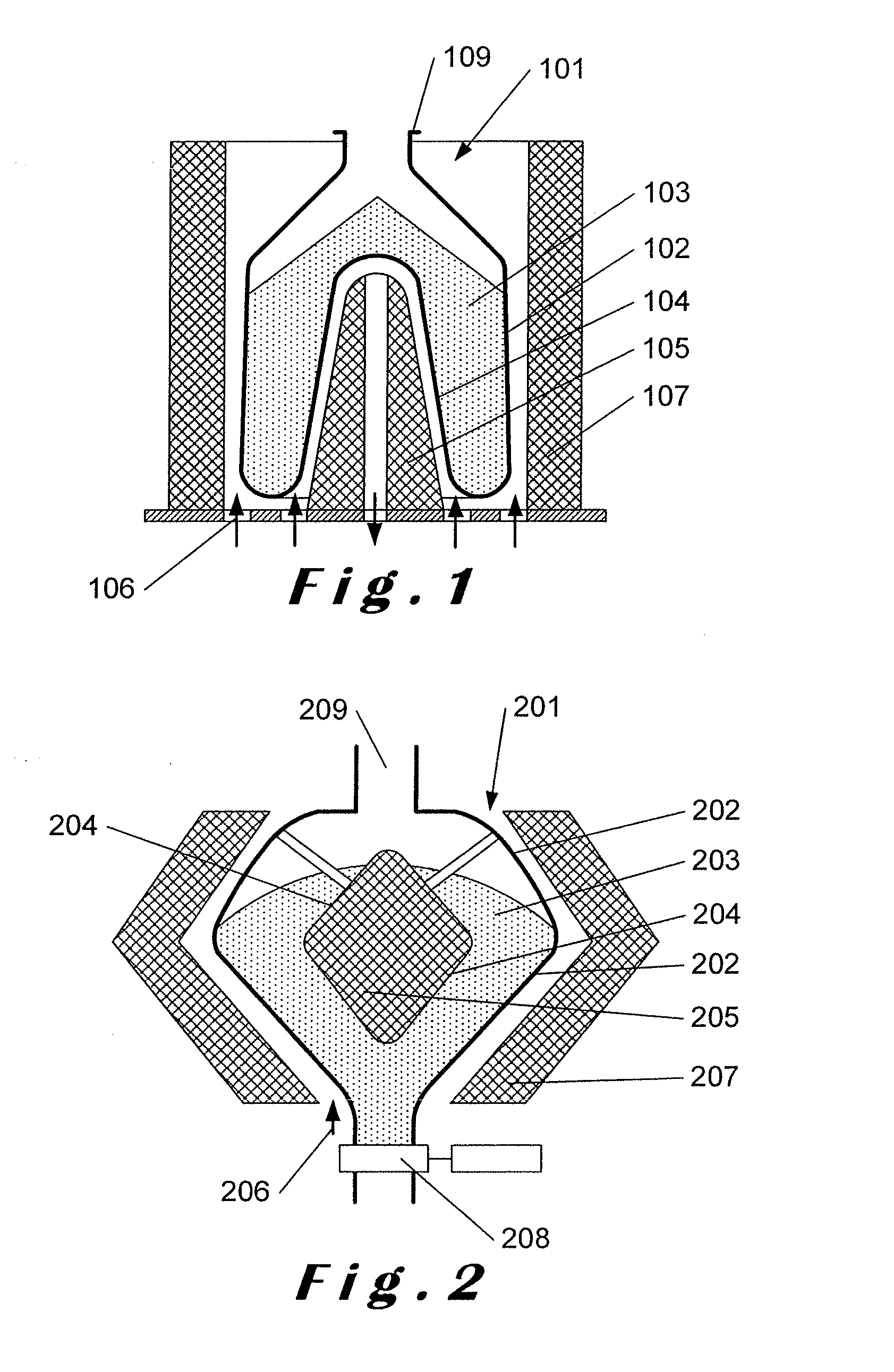Criticality prevention devices and methods in nuclear fuel production
a technology of criticality and nuclear fuel, which is applied in the direction of nuclear energy generation, reactor fuel elements, climate sustainability, etc., can solve the problems of generating possible criticality risks, occurrence risk of criticality accidents caused by the arrangement of fissile materials, and inacceptable geometries
- Summary
- Abstract
- Description
- Claims
- Application Information
AI Technical Summary
Benefits of technology
Problems solved by technology
Method used
Image
Examples
Embodiment Construction
[0076]Details concerning a particular embodiment of the invention are described hereafter with reference to the following drawings in an illustrative and non-limitative manner.
[0077]FIG. 1 represents a sectional view of an annular transfer vessel, in the form of a jar, according to an embodiment of the invention;
[0078]FIG. 2 represents a sectional view of an annular accumulation vessel, in the form of a hopper, according to another embodiment of the invention;
[0079]FIG. 3 represents a sectional view of a ball mill according to another embodiment of the invention;
[0080]FIG. 4 represents a schematic view of a containment enclosure containing a mixing vessel according to another embodiment of the invention;
[0081]FIG. 5 represents a containment enclosure according to another embodiment of the invention;
[0082]FIG. 6 represents another view of the same containment enclosure along line A-A of FIG. 5;
[0083]FIG. 7 is a schematic representation of the preparation process of the invention to a...
PUM
| Property | Measurement | Unit |
|---|---|---|
| volume | aaaaa | aaaaa |
| distance | aaaaa | aaaaa |
| distance | aaaaa | aaaaa |
Abstract
Description
Claims
Application Information
 Login to View More
Login to View More - R&D
- Intellectual Property
- Life Sciences
- Materials
- Tech Scout
- Unparalleled Data Quality
- Higher Quality Content
- 60% Fewer Hallucinations
Browse by: Latest US Patents, China's latest patents, Technical Efficacy Thesaurus, Application Domain, Technology Topic, Popular Technical Reports.
© 2025 PatSnap. All rights reserved.Legal|Privacy policy|Modern Slavery Act Transparency Statement|Sitemap|About US| Contact US: help@patsnap.com



